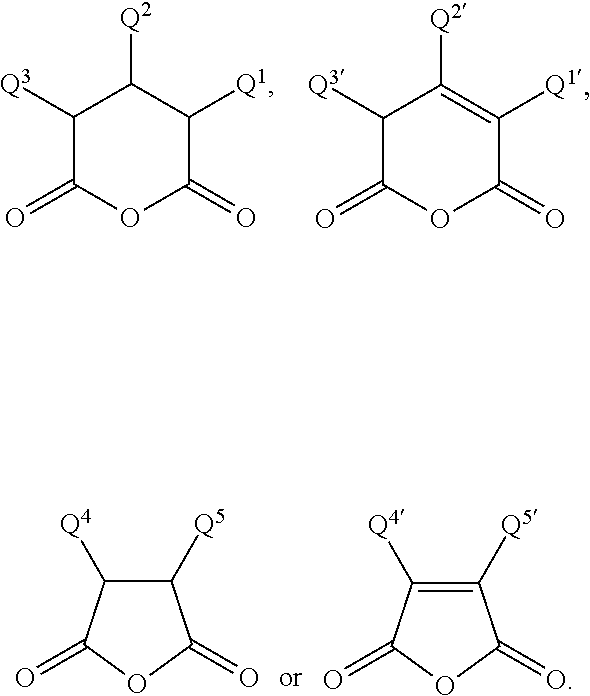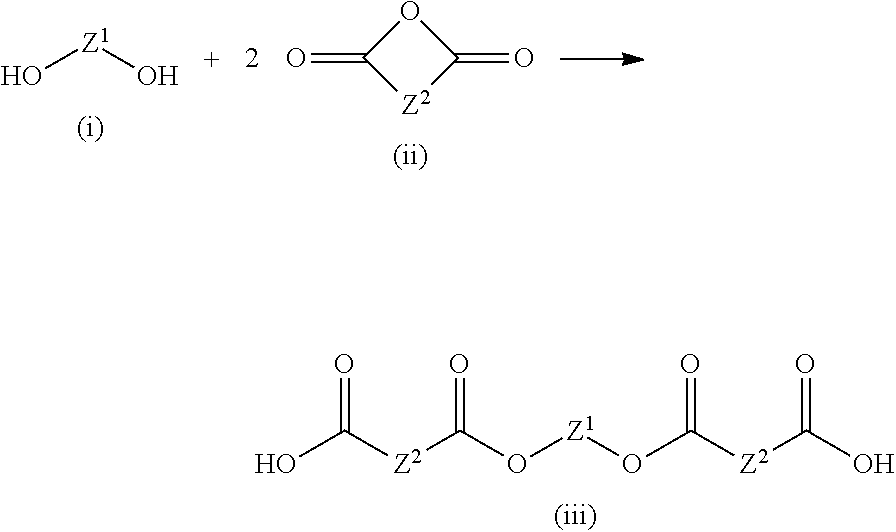Reaction products based on amphiphilic block copolymers and their use as impact modifier
a technology of amphiphilic block copolymer and reaction product, applied in the direction of epoxy resin adhesive, adhesive type, lamination, etc., can solve the problems of high mechanical strength, damage to bonding, and weak epoxy resin composition in low-temperature impact strength
- Summary
- Abstract
- Description
- Claims
- Application Information
AI Technical Summary
Benefits of technology
Problems solved by technology
Method used
Image
Examples
examples
Preparation of CGAS Impact Modifier Containing Carboxylic Acid Groups
[0187]110.0 g Fortegra™ 100 (OH number: 16 mg / g KOH) and 4.74 g phthalic acid anhydride (Fluka) were stirred at 140° C. for 2 hours under nitrogen, and for an additional 2 hours under vacuum. A viscous CGAS polymer containing carboxylic acid groups and having an acid number of 15.5 mg / g KOH (15.7 mg / g KOH theoretical) was obtained.
[0188]Preparation of EGAS Impact Modifier Containing Epoxy Groups
[0189]The CGAS impact modifier containing carboxylic acid groups, prepared as described above, was further reacted by adding 165 g D.E.R. 331 epoxy resin (Dow) and 0.55 triphenylphosphine, and stirring the mixture for 3 hours at 120° C. under vacuum. A viscous EGAS polymer containing epoxy groups and having an epoxy content of 3.14 eq / kg (3.15 eq / kg theoretical) was obtained.
[0190]Preparation of SM1 Impact Modifier
[0191]150 g poly-THF®2000 (OH number 57 mg / g KOH, BASF) and 150 g Liquiflex H (OH number 46 mg / g KOH, Krahn) wer...
PUM
| Property | Measurement | Unit |
|---|---|---|
| Temperature | aaaaa | aaaaa |
| Temperature | aaaaa | aaaaa |
| Temperature | aaaaa | aaaaa |
Abstract
Description
Claims
Application Information
 Login to View More
Login to View More - R&D
- Intellectual Property
- Life Sciences
- Materials
- Tech Scout
- Unparalleled Data Quality
- Higher Quality Content
- 60% Fewer Hallucinations
Browse by: Latest US Patents, China's latest patents, Technical Efficacy Thesaurus, Application Domain, Technology Topic, Popular Technical Reports.
© 2025 PatSnap. All rights reserved.Legal|Privacy policy|Modern Slavery Act Transparency Statement|Sitemap|About US| Contact US: help@patsnap.com



